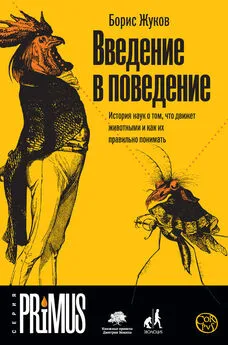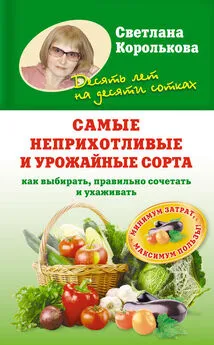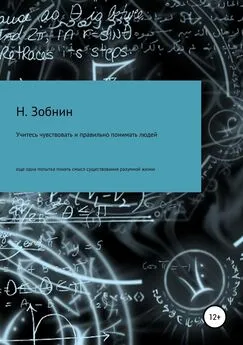Герд Гигеренцер - Понимать риски. Как выбирать правильный курс
- Название:Понимать риски. Как выбирать правильный курс
- Автор:
- Жанр:
- Издательство:Array Литагент «Аттикус»
- Год:2015
- Город:Москва
- ISBN:978-5-389-09327-0
- Рейтинг:
- Избранное:Добавить в избранное
-
Отзывы:
-
Ваша оценка:
Герд Гигеренцер - Понимать риски. Как выбирать правильный курс краткое содержание
В этой книге рассказывается, как распознавать случаи, когда предоставляемая нам информация оказывается неполной, и как следует поступать в таких ситуациях. Ее автор Герд Гигеренцер всесторонне рассматривает приводимые примеры, выявляя причины неправильного понимания тех рисков, с которыми мы сталкиваемся. Он показывает, как можно использовать простые правила, которые помогут нам избегать беспричинных страхов или надежд и принимать более грамотные и взвешенные решения.
Понимать риски. Как выбирать правильный курс - читать онлайн бесплатно полную версию (весь текст целиком)
Интервал:
Закладка:
Miller G. (2000). The mating mind: How sexual choice shaped the evolution of human nature. London: William Heinemann.
Mintzberg H. (2009). Managing. San Francisco: Berrett-Koeler.
Monti M., Martignon L., Pelligra V., Gugliemetti C. ( 2012). The insurance by my side: Better risk assessment for smarter insurance decisions (CAREFIN Working Paper No. 3/2011). Milan: Universitа Commerciale Luigi Bocconi.
Mooi W. J., Peeper D. S. (2006). Oncogene-induced cell senescence – Halting on the road to cancer. New England Journal of Medicine 355, 1037–1046.
Multmeier J. (2012). Representations facilitate Bayesian reasoning: Computational facilitation and ecological design revisited (Unpublished doctoral dissertation). Free University: Berlin.
Munro E. (2004). A simpler way to understand the results of risk assessment instruments. Children and Youth Services Review 25, 873–883.
Muris, P. Merckelbach H., Meesters C., Van Lier P. (1997). What do children fear most often? Journal of Behavior Therapy and Experimental Psychiatry 28, 263–267.
Nass-Griegoleit I., Schultz-Zehden B., Klusendick M., Diener J., Schulte, H. (2009). Studie belegt hohe Akzeptanz des Mammographie-Screenings bei Frauen: Ergebnisse der ersten repräsentativen Studie in Deutschland. Frauenarzt 50, 494–501.
Neuberg S. L., Newsom J. T. (1993). Personal need for structure: Individual differences in the desire for simple structure. Journal of Personality and Social Psychology 65, 113–131.
Nida-Rümelin J. 2011. Die Optimierungsfalle. Munich: Irisiana.
Nisbett R. E. (2003). The geography of thought: How Asians and Westerners think differently… and why. New York: Free Press.
Nisbett R. E. (2009). Intelligence and how to get it. New York: Norton.
Nyström L. (2002). Long-term effects of mammography screening: Updated overview of the Swedish randomized trials. Lancet 359, 909–919.
Öhman A., Mineka S. (2001). Fears, phobias, and preparedness: Toward an evolved module of fear and fear learning. Psychological Review 108, 483–522.
Ophir E., Nass C., Wagner A. D. (2009). Cognitive control in media multitaskers. Proceedings of the National Academy of Sciences of the United States of America 106, 15583–15587.
Orpana H. M, Berthelot J. M., Kaplan M. S., Freny D. H., McFarland B., Ross N. A. (2008). BMI and mortality: Results from a national longitudinal study of Canadian adults. Obesity 18, 214–218.
Orrell D. (2010). Economyths. London: Icon Books.
Ortmann A., Gigerenzer G., Borges B., Goldstein D. G. (2008). The recognition heuristic: A fast and frugal way to investment choice? In C. R. Plott and V. L. Smith (Eds.), Handbook of experimental economics results: Vol. 1. P. 993–1003. Amsterdam: North-Holland.
Paulos J. A. (1988). Innumeracy: Mathematical illiteracy and its consequences. New York: Vintage Books.
Payer L. (1996). Medicine and culture. New York: Holt.
Peto J. (2001). Cancer epidemiology in the last century and the next decade. Nature 411, 390–395.
Piatelli-Palmarini M. (1991). Probability blindness: Neither rational nor capricious. Bostonia, March/April, 28–35.
Piatelli-Palmarini M. (1994). Inevitable illusions: How mistakes of reason rule our minds. New York: Wiley.
Picano E., Matucci-Cerinic M. (2011). Unnecessary radiation exposure from medical imaging in the rheumatology patient. Rheumatology 50, 1537–1539.
Polya G. (1954). Mathematics and plausible reasoning (Vol. 1). Princeton, NJ: Princeton University Press.
Posner R. A. (2009). A failure of capitalism. Cambridge, MA: Harvard University Press.
Proctor R. N. (2012). The history of the discovery of the cigarette – lung cancer link: Evidentiary traditions, corporate denial, global toll. Tobacco Control 21, 87–91.
Pronovost P., Needham D., Berenholtz S., Sinopoli D., Chu H., Cosgrove S., et al. (2006). An intervention to decrease catheter– related bloodstream infections in the ICU. New England Journal of Medicine 355, 2725–2732.
Quart A. (2003). Branded: The buying and selling of teenagers. Cambridge, MA: Perseus Publishing.
Quigley C. (1996). The corpse: A history. London: McFarland.
Rampura V., Hapani S., Wu S. (2011). Treatment-related mortality with Bevacizumab in cancer patients: A meta-analysis. Journal of the American Medical Association 305, 487–494.
Rebonato R. (2012). Taking liberties: A critical examination of libertarian paternalism. Basingstoke, UK: Palgrave Macmillan.
Renn O. (2007). Die Multidisziplinarität des Themas Risiko [The multidisciplinarity of the topic «risk»]. In Berlin-Brandenburgische Akademie der Wissenschaften (Ed.). Risiko (p. 71–75). Berlin.
Reyna V. F., Brainerd C. J. (2007). The importance of mathematics in health and human judgment: Numeracy, risk communication, and medical decision making. Learning and Individual Differences 17, 147–159.
Ripley A. (2009). The unthinkable: Who survives when disaster strikes – and why. New York: Three Rivers Press.
Sahlberg P. (2011). Finnish lessons: What can the world learn from educational change in Finland? New York: Teachers College Press.
Savage L. J. (1954). The foundations of statistics. NY: Dover.
Schirrmacher F. (2009). Payback. Munich: Blessing.
Schneider S. (2010, June 29). Homo economicus – or more like Homer Simpson? Deutsche Bank Research. Retrieved from www.dbresearch.com.
Schroeder F. H., et al. (2012). Prostate-cancer mortality at 11 years of follow -up. New England Journal of Medicine 366, 981–990.
Schütze M. (2011). Alcohol attributable burden of incidence of cancer in eight European countries based on results from prospective cohort study. British Medical Journal 342, d1584.
Schwartz D. T. (2007). Counter-point: Are we really ordering too many CT scans? Western Journal of Emergency Medicine 9, 120–122.
Schwartz B., Ward A., Monterosso J., Lyubomirsky S., White K., and Lehman D. R. (2002). Maximizing versus satisficing: Happiness is a matter of choice. Journal of Personality and Social Psychology 83, 1178–1197.
Schwartz L. M., Woloshin S. (2011). The drug facts box: Making informed decisions about prescription drugs possible. In G. Gigerenzer and J. A. Muir Gray (Eds.). Better doctors, better patients: Envisioning health care 2020 (p. 233–242). Cambridge, MA: MIT Press.
Schwartz L. M., Woloshin S., Welch H. G. (1999). Risk communication in clinical practice: Putting cancer in context. Monograph of the National Cancer Institute 25, 124–133.
Schwartz L. M., Woloshin S., Welch H. G. (2009). Using a drug facts box to communicate drug benefits and harms. Annals of Internal Medicine 150, 516–527.
Schwartz L. M., Woloshin S., Fowler F. J., Welch H. G. (2004). Enthusiasm for cancer screening in the United States. Journal of the American Medical Association 291, 71–78.
Sedrakyan A., Shih C. (2007). Improving depiction of benefits and harms: Analyses of studies of well-known therapeutics and review of high-impact medical journals. Medical Care 45, 523–528.
Seligman M. E. P. (1970). On the generality of the laws of learning. Psychological Review 77, 406–418.
Selvin S. (1975). A problem in probability [Letter to the editor]. American Statistician 29, 67.
Shah N. B., Platt S. L. (2008). ALAR A: Is there a cause for alarm? Reducing radiation risk from computed tomography scanning in children. Current Opinion in Pediatrics 20, 243–247.
Sherden W. A. (1998). The fortune sellers. New York: Wiley.
Shibata A., Whittemore A. S. (2001). Re: Prostate cancer incidence and mortality in the United States and the United Kingdom. Journal of the National Cancer Institute 9, 1109–1110.
Siegrist M., Cousin M.-E., Keller C. (2008). Risk communication, prenatal screening, and prenatal diagnosis: The illusion of informed decision making. Journal of Risk Research 11, 87–97.
Sirovich B. E., Welch H. G. (2004). Cervical cancer screening among women without a cervix. Journal of the American Medical Association 291, 2990–2993.
Slovic P. (1987). Perception of risk. Science 236, 280–285. doi:10.1126/science.3563507.
Smith-Bindman R., Lipson J., Marcus R., Kim K.-P., Mahesh M., Gould R., et al. (2009). Radiation dose associated with common computed tomography examinations and the associated lifetime attributable risk of cancer. Archives of Internal Medicine 169, 2078–2086.
Steimle S. (1999). UK’s Tony Blair announces crusade to fight cancer. Journal of the National Cancer Institute 91, 1189.
Steinman M., Shlipak M. G., McPhee S. J. (2001). Of principles and pens: Attitudes and practices of medical house staff toward pharmaceutical industry promotions. American Journal of Medical Genetics 110, 551–557.
Stephen A. E., Segev D. L., Ryan D. P., Mullins M. E., Kim S. H., Schnitzer J. J., Doody D. P. (2003). The diagnosis of acute appendicitis in a pediatric population: To CT or not to CT. Journal of Pediatric Surgery 38, 367–371.
Steurer J., Held U., Schmidt M., Gigerenzer G., Tag, B., Bachmann L. M. (2009). Legal concerns trigger prostate-specific antigen testing. Journal of Evaluation in Clinical Practice 15, 390–392. doi:10.1111/ j.1365–2753.20 08. 01024. x.
Stiftung Warentest (2004, February). Urologen im Test: Welchen Nutzen hat der PSA-Test? Stiftung Warentest, 86–89.
Stigler S. M. (1980). Stigler’s law of eponymy. Transactions of the New York Academy of Sciences 39, 147–157.
Stigler S. M. (1983). Who discovered Bayes’ Theorem? American Statistician 37, 290–296.
Stiglitz J. E. (2010). Freefall: America, free markets, and the sinking of the world economy. New York: Norton.
Stine G. J. (1996). Acquired immune deficiency syndrome: Biological, medical, social, and legal issues (2nd ed.). Englewood Cliffs, NJ: Prentice Hall.
Strayer D. L., Drews F. A., Crouch D. J. (2006). Comparing the cell-phone driver and the drunk driver. Human Factors 48, 381–391.
Studdert D. M., Mello M. M., Sage W. M., DesRoches C. M., Peugh J., Zapert K., Brennan T. A. (2005). Defensive medicine among high-risk specialist physicians in a volatile malpractice environment. Journal of the American Medical Association 293, 2609–2017.
Studdert D. M., Mello M. M., Gawande A. A., Gandhi T. K., Kachalla A., Yoon, C., et al. (2006). Claims, errors, and compensation payments in medical malpractice litigation. New England Journal of Medicine 354, 2024–2033
Taleb N. N. (2004). Fooled by randomness: The hidden role of chance in life and in the markets. London: Thomson.
Taleb N. N., and Blyth, M. (2011). The black swan of Cairo. Foreign Affairs 90, 33–39.
Tankard J. W. (1979). The H. G. Wells quote on statistics: A question of accuracy. Historia Mathematica 6, 30–33.
TAP Study Group (2001). Photodynamic therapy of subfoveal choroidal neovascularization in age-related macular degeneration with verteporfin. Archives of Ophthalmology 119, 198–207.
Tengs T. O., Adams M. E., Pliskin J. S., Safran D. G., Siegel J. E., Weinstein M. C., Graham J. D. (1995). Five-hundred life-saving interventions and their cost-effectiveness. Risk Analysis 15, 369–390.
Читать дальшеИнтервал:
Закладка:










